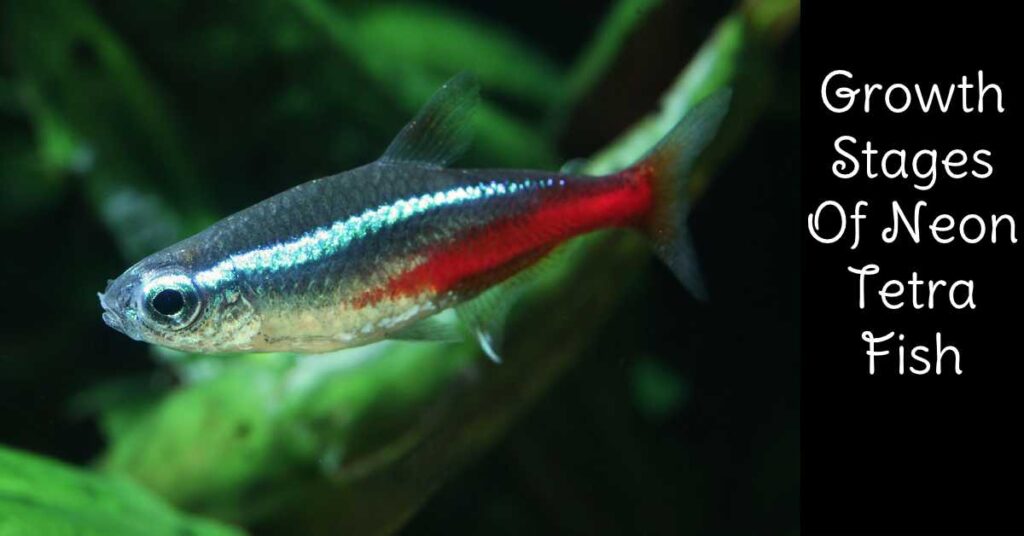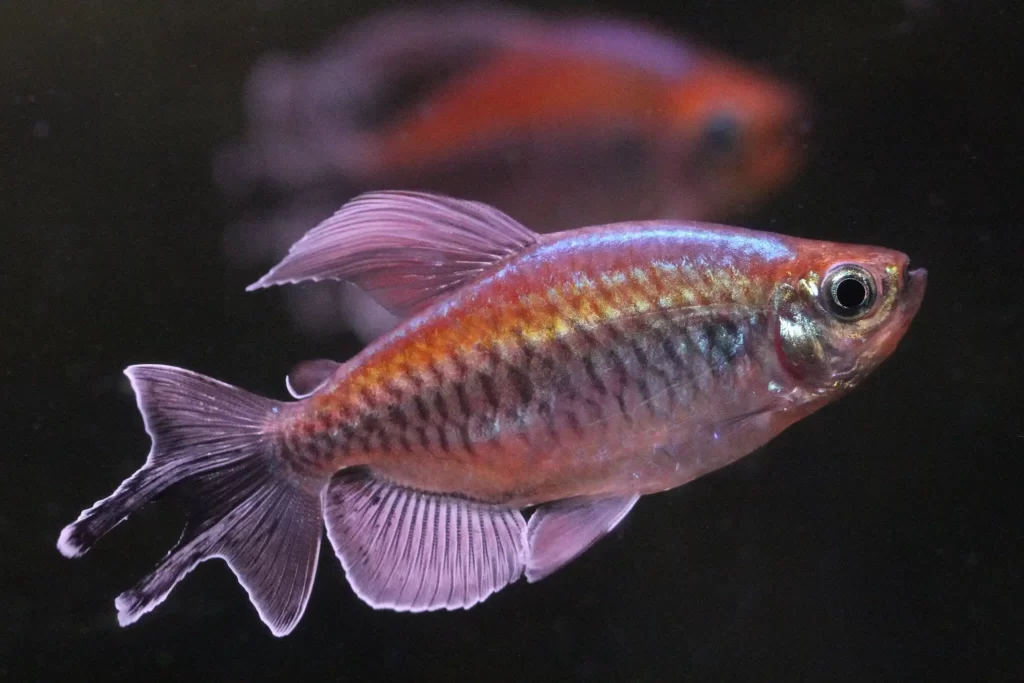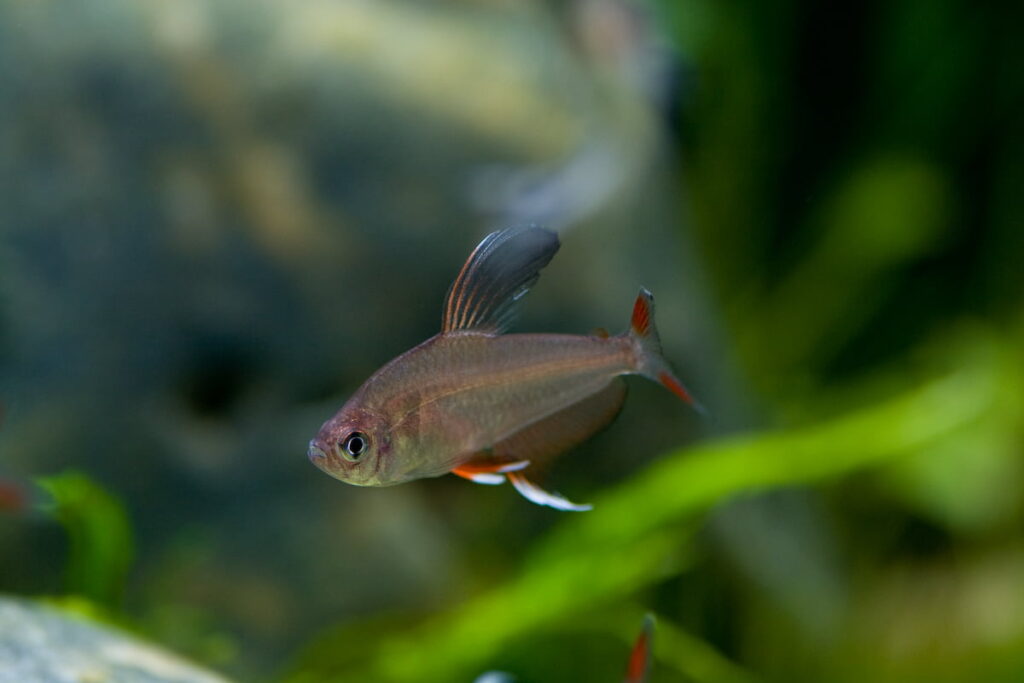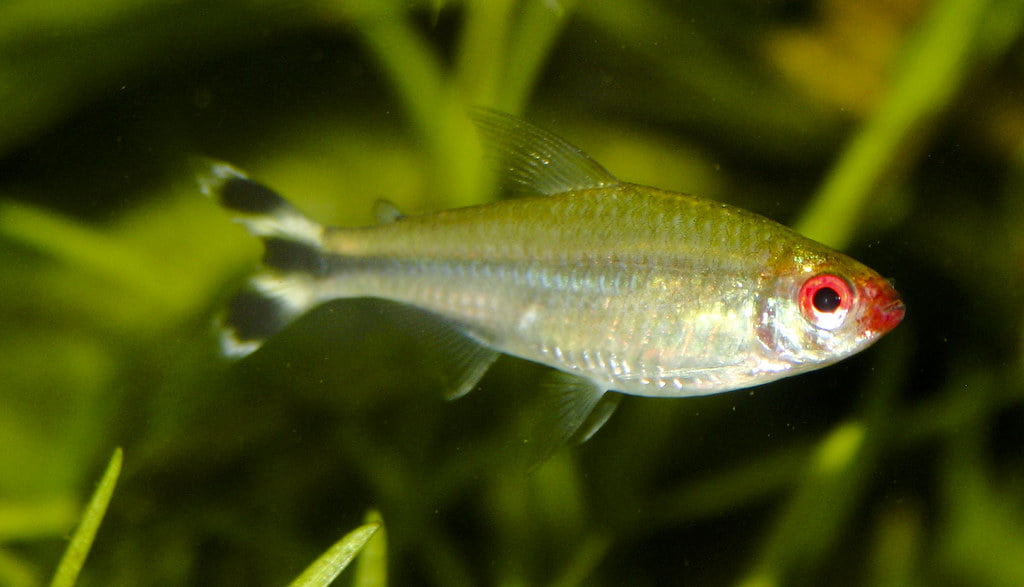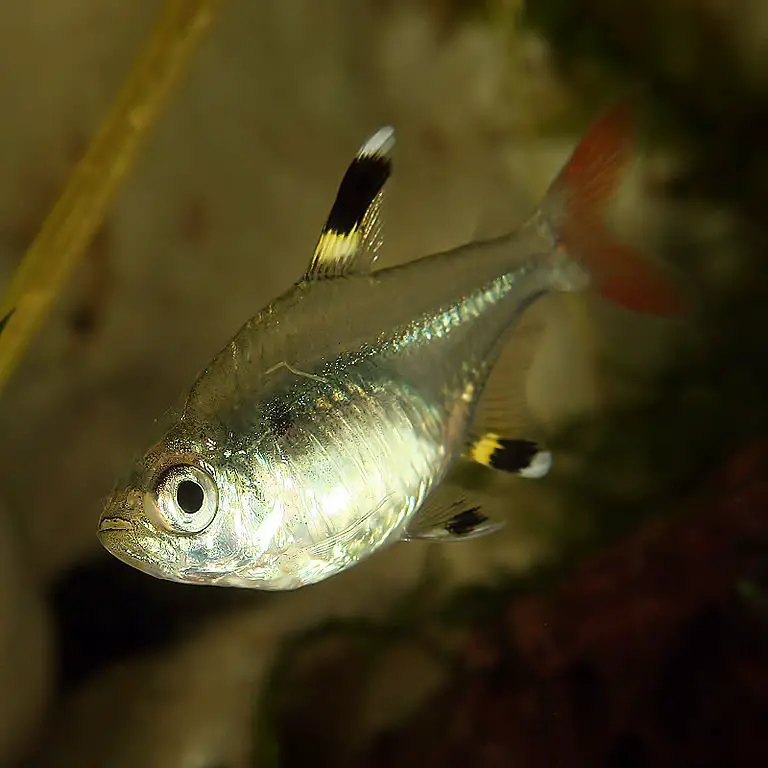For an aquarist, no sight is more beautiful than having Neon Tetra Fish in an aquarium. Neon tetras are one of the most popular tropical fish since it is easy to care. Furthermore, their vibrant colors add beauty to the aquarium. Also, these species of fish are suitable for beginners as well as for experienced aquarists.
Related Article: Top 10 Easy to Care Tetra Fish – Perfect For Beginners
Neon Tetras are community fish, therefore, you need to keep them in a group of at least 6. Neon Tetra Fish are so energetic and active that you will not get tired of watching them all day. Their body has a color combination of blue and red. If they feel unsafe, these fish will turn off their red/blue iridescent hue to protect themselves.
Like all other living creatures, Neon Tetra also starts its life from a single cell, and gradually it multiplies to many. Neon tetra lives a simple life with other species. The life cycle of Neon Tetra consists of 6 stages. Female lay eggs which are immediately fertilized by males that turn to fry after a few hours. Neon Tetra fry gradually grows and reaches the juvenile stage, then the fish become young, and finally, Neon tetras are adults who are ready to bring new life in this world.
In this article, I will be explaining to you different stages of the lifecycle of Neon Tetra Fish along with the care you need to give them. I will also include the breeding process, where I will explain the different conditions that you need to pay attention to.
Breeding Process
As I mentioned earlier, Neon Tetras are very easy to care for, as you do not need to give them special care. But, during the time of breeding, you need to look after them. There are various conditions for Neon Tetras to breed. Here, I will be discussing the breeding process of Neon Tetras and the conditions these fish prefer while breeding.
First of all, separate the breeding tank of 5-10 gallons with a lid maintaining a water temperature of 72-75 degrees Fahrenheit and water hardness 5.0-6.0 PH. You do not require lights in this tank because small Neon Tetras are very sensitive to light. So, it is better to maintain the darkness in the aquarium. I would suggest covering the tank with dark paper to reduce light.
Also Read: Increase the pH of Your Freshwater Aquarium
Furthermore, you can add a sponge filter to filter the water of the tank. Also, as sponge filters are gentle, it doesn’t harm the eggs or the fry of Neon Tetras. And, you should also add live plants for Neon Tetras to lay eggs.
After you set up all these in your breeding tank, introduce the healthy pairs in it. Before introducing the pair of Neon Tetras, feed them with high protein foods so that females become active to spawn. The best time to introduce pairs to the tank is evening time. Do not forget to cover the aquarium to give them some private space. Generally, it takes 2-3 days for your Neon Tetras to spawn, but sometimes it may take a week or two also.
Eggs
Generally, the spawning of Neon Tetras occurs in the morning. You can see the eggs at the bottom of the tank in the plants. Neon tetras can lay 100-150 eggs at once, which is transparent and will stick to the plants. Sometimes, you will need to keep the pair for 2-3 days in the tank and ensure that your Neon Tetras are 12 weeks old for breeding.
It will take 24 hours for the eggs to hatch. You must remove the breeding pair from the tank as soon as the eggs are fertilized because adults may eat the eggs and fry. Though Neon Tetras lay 100-150 eggs, do not expect all the eggs to be fertilized.
Only one-third of the total number of eggs grows to fry, and others die. You can see the eggs getting fungus, and turning white, representing the eggs are not fertilized. You need to remove all the unfertilized eggs as the eggs can spread the fungus to other fertilized eggs. The eggs of Neon Tetra Fish rot quickly, which release ammonia that is dangerous for fry. You can notice the fry suffering if you do not remove unhatched eggs.
Some aquarists suggest keeping snails in the tank because the snails eat the unfertilized eggs. But I recommend not keeping snails because they eat not only rotten eggs but also eat good eggs. You can also use methylene blue or hydrogen peroxide to prevent fungus in the eggs.
You need a lot of patience to see your Neon Tetras breed and also try to give the same kind of environment in the breeding tank as in the other. This will help the adult Neon Tetra to produce eggs.
Larval Stage of Neon Tetra Fish
In the larval stage, the fish has a yolk attached that provides Neon Tetras with nourishment for one or two weeks. Those babies will start feeding themselves when Neon Tetras absorbs the yolk. During the larval stage, you do not need to provide them anything to eat. You need to maintain 72-75 degrees Fahrenheit and air bubbles to dissolve oxygen in the tank.
The larval stage of Tetra Fish may be long or short, depending on the type of Tetra Fish.
Fry Neon Tetra Fish
After 24 hours of laying, they will turn into little fry. It’s a bit difficult for you to see them with your eyes because these fish are too small. You cannot see the fish active for around five days because they have not become free swimmers.
You can see the fry hiding in the plants. And, when you feed the fries, they will come out from the plants. Another exciting thing is, they love the heater. So you can also see some Neon Tetras near the heater most of the time. It is better not to light the aquarium because they are sensitive to light.
You cannot feed them like the adults, so provide them infusoria 2-3 times a day. The aquarists mostly prefer infusoria culture because it is a mix of small creatures and microorganisms that grow in an infusion. After a few days, feed them baby brine shrimp, which helps to gain nutrition, or ask in a pet store for the better food.
After five days, the fry will be swimming in the tank. But still, you need to be very careful because neon tetra fry are too sensitive to disease and injuries. Try to change the water partially but daily, which helps to protect Neon Tetras from toxins.
Also Read:
- Tetra Fry Care – How to Care for Baby Tetras?
- Aquarium Filters Best Suited For Tetra Fish Fry
- How To Feed Tetra Fish Fry Properly | Dos and Don’ts With Alternative Fry Food
- Tetra Fry Tank Set-Up: Fish Tank Requirement For The Fry
Juvenile Neon Tetra Fish
After one month, the fry will be in the juvenile stage where their spine, stomach, and that can be seen. In this stage, the fish gain some color, distinguishing whether these fish are male or female. Females are shorter than males with a round belly, so from this also, it will be easy for you to distinguish.
During this phase, you need to feed infusoria and egg yolk but in small size. You should avoid keeping other filters than sponge filters because Neon Tetras will be too small, and the juveniles may die.
Clean your aquarium daily, confirming that there is no slime in it. Neon Tetras need to breathe the air to fill its swim bladder, which helps the fish to grow properly in the stage of a juvenile. As Neon Tetras are hardy fish, keep on adding water in the aquarium to make the water harder.
This is a crucial stage in the lifecycle of Neon Tetras. Juveniles should be given proper food and water. The juvenile period ends when the reproductive organs of Neon Tetra Fish mature and are capable of reproduction.
Young Neon Tetra Fish
When the Neon Tetra becomes two months old, then the fish are said to be young. These fish look more or less like adults and are sexually active as well. As an aquarist, you need to feed these fish with high protein food so that the Neon tetra becomes capable of reproducing. For this, reduce fat, giving food, and increase greens and protein. You can still feed Brine Shrimp.
I have seen some aquarists keeping males and females separately to control the reproduction. If you want your young Neon Tetra Fish to grow properly and be healthy, keep male and female separately. This helps the Neon Tetra Fish to focus on feeding rather than spawning.
But if you want, you can keep them together after three months in the tank. During this stage, their body structure is properly developed with more intense colors.
Adult Neon Tetra Fish
The size of adult Neon Tetra Fish is 2.5 inches(6.35 cm). After this stage, the growth of Neon tetras may stop or slow down. You can feed these fish mostly flake foods, brine shrimp, daphnia, dried bloodworms. However, the dried bloodworms get stuck on the side of an aquarium and micro pellet food to supplement their diets.
Also Read:
- How Many Neon Tetras in a 10-gallon tank
- How Many Tetra Fish Per Gallon of Water?
- How Many Neon Tetras Per Gallon Of Water | Different Gallon Tanks?
You need to give the adults high protein food because this encourages adults to mate and spawn. But avoid feeding fats because it may impact the health of the Neon Tetras. This is the proper time and phase to introduce new ones to the world.
Females have a curved blue stripe, whereas males have a straight blue stripe. This is the main difference between a male and female Neon Tetra Fish.
Neon Tetras can live up to 8 years if you care for them properly. In the past, it was difficult for Neon Tetra Fish to breed in an artificial environment due to inappropriate conditions.
Final Words
When you breed the Neon Tetra Fish, you need to be careful and attentive because this is too sensitive. Talking about myself, when I first attempted to breed Neon Tetra Fish, I failed miserably. None of the eggs turned into fries.
That is why I recommend to look after your Neon Tetras when they mate, spawn and develop. These are the crucial period for the Neon Tetra Fish because the fish are susceptible until these fish become adults.
From maintaining the separate breeding tank for new life to introducing the fish in the other tank, you need to look after these fish like your own babies.
Neon Tetra Fish will be healthy if you feed them correctly according to the necessity of their bodies. I have gathered as much information as possible and presented it in the article along with my experience.
Moreover, I have tried to explain all the growth stages and the precautions that you need to take before the Neon tetras mate and after these fish lay eggs. Neon Tetras lay eggs scattering in the live plants, and the males fertilize the eggs immediately after the females lay.
I hope you will find this article useful when you breed your Neon Tetra Fish.
